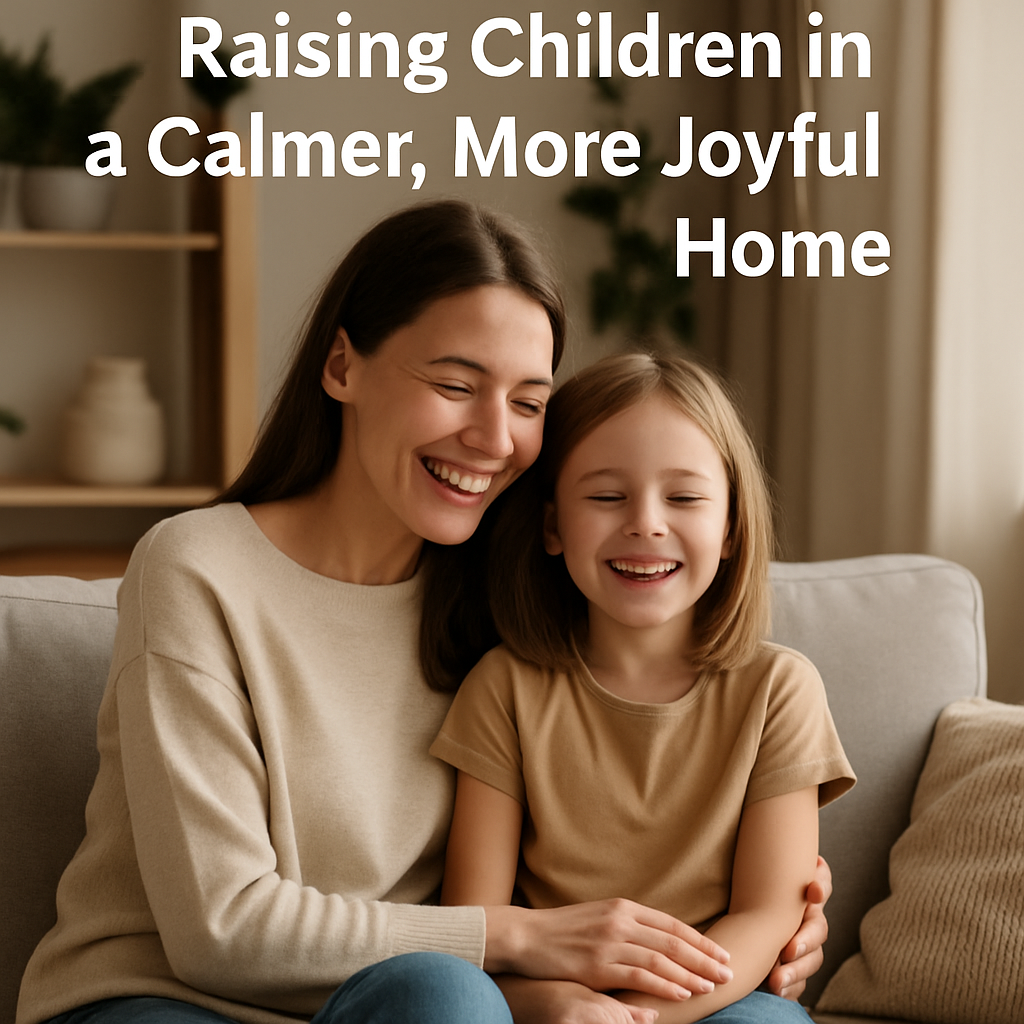Parenting doesn’t have to feel like constant chaos and stress. While raising children will always come with its share of challenges, it’s possible to create a home environment that feels lighter, calmer, and more joyful — not just for your kids, but for you as well.
In this article, we’ll explore practical, easy-to-apply tips to help reduce stress and create a home atmosphere filled with more connection, laughter, and peace.
Why a Peaceful Environment Matters
Children are sensitive to the emotional energy around them. A chaotic, tense household can lead to:
- Increased anxiety or behavioral issues
- Difficulty focusing or sleeping
- Weakened emotional bonds with caregivers
Conversely, a calm, supportive home nurtures:
- Better emotional regulation
- Greater cooperation and respect
- Stronger self-esteem
By intentionally creating a peaceful space, you’re not just improving your child’s life — you’re improving your own well-being, too.
1. Simplify Your Daily Routine
A packed, unpredictable schedule can leave both kids and parents overwhelmed. Simplify wherever possible.
Try this:
- Establish a predictable morning and bedtime routine
- Use visual charts for younger kids
- Keep transition times calm and unrushed
Consistency helps children feel secure, and it reduces last-minute stress.
2. Declutter Your Space
Visual clutter often creates mental clutter. A messy environment can overstimulate children and increase tension in adults.
Practical steps:
- Involve your children in simple tidying rituals
- Rotate toys to keep the environment fresh but not overwhelming
- Use baskets or labeled bins to keep things organized
A more organized space promotes peace of mind for everyone.
3. Use a Calm Tone and Body Language
Children often mirror your emotional state. Yelling, even when unintentional, increases stress for both parties. Instead, model the calm behavior you want them to learn.
Practice:
- Get down to their level when speaking
- Use eye contact and a soft voice
- Breathe before you respond — not just react
Your presence is your most powerful parenting tool.
4. Create Small Moments of Connection Daily
You don’t need grand gestures to build strong bonds — consistent small moments matter more.
Ideas:
- Read a short story before bed
- Share a snack and talk about your day
- Offer a hug or gentle touch during transitions
These little rituals create emotional safety and a sense of belonging.
5. Set Realistic Expectations
Frustration often stems from expecting too much, too soon. Consider your child’s age and development before reacting to behavior.
For example:
- Toddlers can’t be still for long — don’t expect quiet dinners.
- Young kids forget things easily — they’re not being defiant.
Adjusting your expectations reduces conflict and disappointment.
6. Use Positive Language
Instead of constantly saying “No!” or “Don’t do that,” try redirecting behavior using calm and positive phrasing.
Examples:
- “Please walk” instead of “Don’t run.”
- “Use kind words” instead of “Stop yelling.”
This approach promotes cooperation over resistance.
7. Limit Screen Time and Overstimulation
Too much screen time or noise can dysregulate children’s nervous systems. Consider:
- Using screens intentionally, not as constant background
- Having quiet time daily (books, puzzles, drawing)
- Using soft music and natural light to calm the space
Less stimulation = fewer meltdowns and more harmony.
8. Take Care of Your Own Energy
You can’t pour from an empty cup. Children pick up on your stress even if you don’t say a word.
Self-care ideas for parents:
- Take short breaks when possible
- Move your body daily (even a walk counts)
- Get support — talk to a partner, friend, or counselor
A regulated parent = a regulated child.
9. Create a “Peace Corner” at Home
Designate a cozy space for calming down — not as punishment, but as a tool.
Include:
- Pillows or soft blankets
- Sensory toys or calming books
- Breathing cards or affirmations
Teach your child how to use it when emotions feel too big.
10. Laugh Together Often
Laughter is powerful medicine. It reduces stress hormones, strengthens connection, and helps kids release energy in a healthy way.
How to invite laughter:
- Tell silly stories
- Dance together in the kitchen
- Make up songs while cleaning
A home where joy is welcome is a home where cooperation and connection flourish.
A Calmer Home Starts with Intention
Raising children in a calm, joyful environment isn’t about being perfect — it’s about being intentional. With a few mindset shifts and daily habits, you can create a space where your children feel emotionally safe, and where you feel more present and at peace.
Remember: calm parenting isn’t passive parenting. It’s strong, respectful, and deeply connected.
